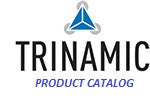CambridgeIC's CAM502 high-speed processor and a range of Precision Through-Hole Rotary Sensors are now available.
The CAM502 high-speed processor connects to resonant inductive sensors built from simple PCBs, measures the linear or angular position of a contactless target and can deliver 5000 independent position samples per second. This is 5 times faster than the previous generation, delivering an attractive solution for motor control and other applications requiring robust, responsive and precise position feedback.
Also newly available is a range of Precision Through-Hole Rotary Sensors. These integrate two different pitches of sensor tracks onto the same physical PCB to increase noise free resolution to 14 bits, 2 bits more (4 times) the previous generation. Large central holes in both the sensor and target mean they can be mounted around a rotating shaft. CambridgeIC’s patented balanced design means the parts are immune to misalignments, so they can be installed without special alignment and calibration and do not need their own bearings and couplings. These simplifications enable customers to deeply embed the technology to deliver compact and cost effective product designs.
Each CAM502 chip connects to and processes one Precision Through-Hole Rotary Sensor, dedicating its processing power to the one sensor for maximum speed. This configuration is suited to motor control, where low latency and precision are required for smoothness and efficiency.
Alternatively, CambridgeIC’s CAM204 chip can connect to two Precision Through-Hole Rotary Sensors, making it an especially effective solution for 2-axis systems measuring angle at the point of load. A typical application is pan and tilt angle feedback, for example in surveillance cameras. The CAM204 provides angle feedback inside a position control loop, so that the camera is pointed in exactly the right direction irrespective of any backlash or other compliance in the drive train between motor and load.
Another pan and tilt application is solar thermal power generation. Usually located in a desert, huge numbers of individual mirrors capture the sun’s rays and reflect them onto a collecting tower. Each mirror’s angle must be precisely controlled in real time for efficient operation. The application requires precise yet robust position feedback elements with a long life in a harsh environment, making resonant inductive technology a close fit.
David Ely, a founder and director of CambridgeIC comments “we are pleased to finally publish details of these new products. They have been in use inside lead customer products for over 2 years, allowing us to verify their robustness and manufacturability ready for a wider market introduction.”







